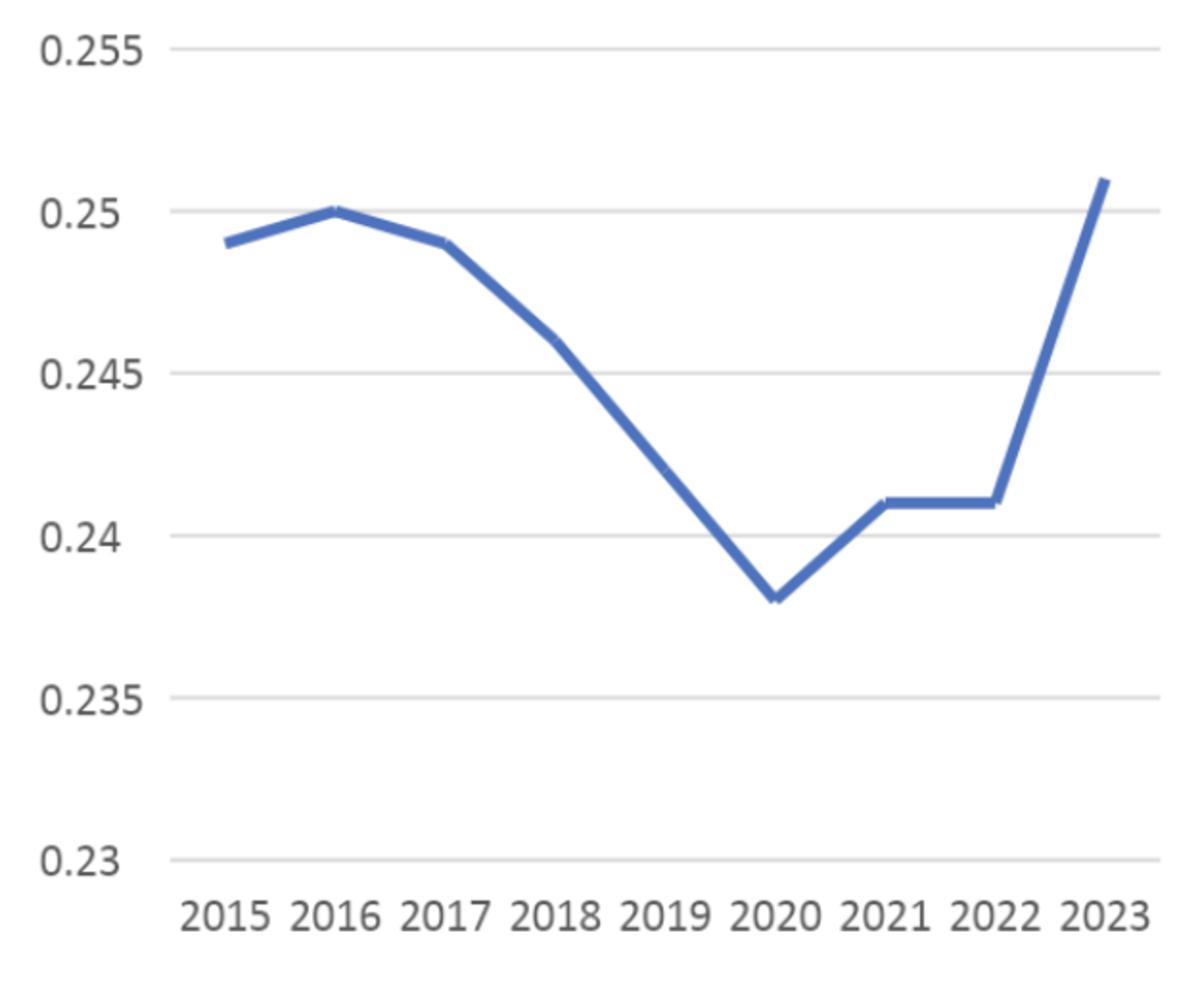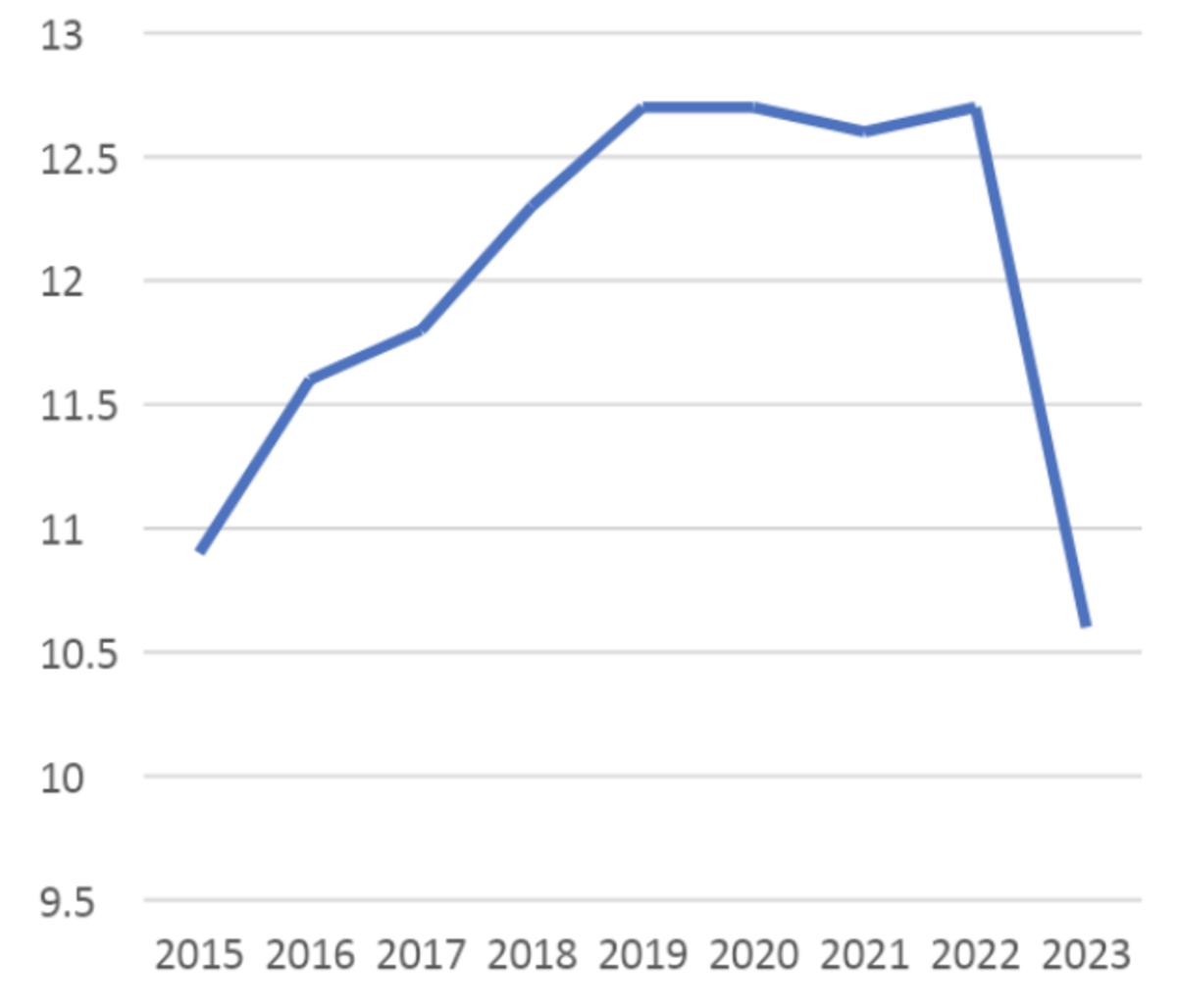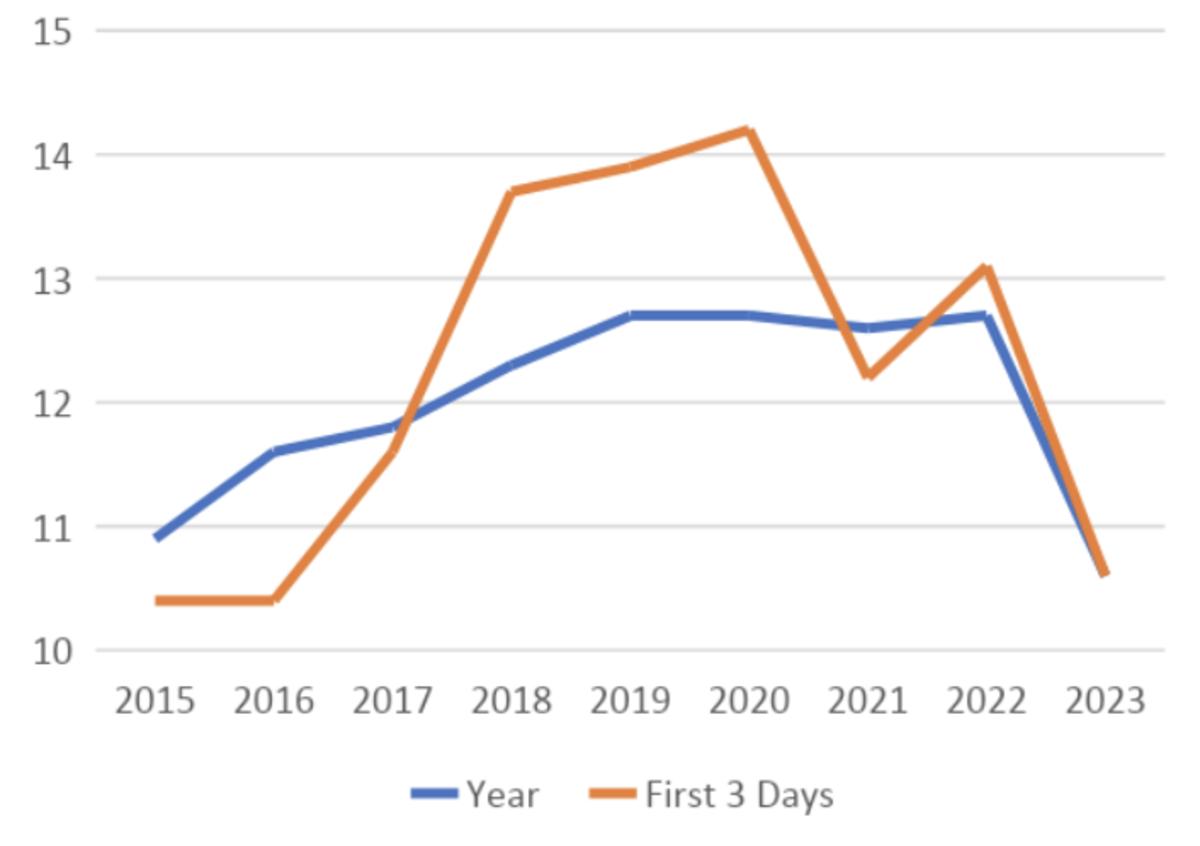Baseball With New Rules Is Already More Exciting. Here's the Proof.

The Dodgers and Angels played one of their Freeway Series exhibition games in two hours and eight minutes. “That was nuts,” said Dodgers starting pitcher Clayton Kershaw. That was almost an hour less than the standard major league game last year, which prompted a thought by Kershaw about the hidden cost of playing so fast: “Hopefully, they sell enough beer,” he said.
The pitch timer cut 25 minutes of dead time out of minor league games, 26 minutes out of spring training games and 26 minutes out of Opening Day games. It works. But if the owners have less time to sell beer, not to mention all other concessions, will they lose money?
No, according to commissioner Rob Manfred. The owners, he said, have done the math. At a luncheon speaking engagement last week hosted by the Paley Media Council in New York, which I moderated, Manfred said MLB surveyed minor league teams after last season to see whether the shorter games impacted their concession sales, especially beer. He said the data showed no significant decline in concession sales.
Manfred said MLB interpreted the data to mean that families were setting aside a finite amount of time at the ballpark to enjoy the game. “After that,” he said, “they were leaving.”
The sweet spot seems to be in the 2:30 to 2:45 window. As the window extends, more people leave; fans’ staying power is driven more by length of game than the competitiveness of the game. Baseball has been the only sport where paying customers will leave a close game because it takes too long. Those days are ending.
If you’re under 40 years old, baseball after its first weekend of this season looks like nothing you’ve ever seen before, such is the crisp pace of play. If you’re over 40, it takes you back to the 1980s, when baseball was at its aesthetic best.
The faster games are getting most of the attention. But let’s also be thankful for the needed aesthetic improvement.
The ban on shifts and bigger bases are succeeding in taking the style of the game out of the hands of front offices and back in the hands of players, which is where it should be. The analytics revolution led to a playing-by-numbers method that over time created a homogenous style. It’s the routine cost when innovation becomes standard procedure: The competitive edge is dulled. That’s how we wound up with a game in which players played defense with laminated cards to tell them where to stand, stopped running because the numbers told them the risk/reward equation was not favorable and struck out more because they tried to lift everything in the air (the ground ball being verboten).
“I think there was a point in time where if your analytics department was more developed than somebody else’s, maybe you got that little edge,” Manfred said. “Right now, everybody’s playing that same game. Once everybody’s doing it, that little margin that maybe you’re getting … I am sure that whatever that margin was at one point in time—whatever it is today—it sure as heck is not worth the damage that was done to the game over a period of time.”
Manfred said a longtime owner told him analytics was “an arms race to nowhere.” The commissioner called it “one of [his] favorite lines, because [he] thinks it’s actually true.”
The competitive playing field leveled as all teams threw more money and personnel into analytics. Keep digging deeper, and the edges get microscopic. The actual game, which trafficked in keeping the ball out of play, suffered. It devolved into a slog that lost almost 15 million paid customers over the past 15 years.
Baseball’s popularity declined because it was too slow. That is no longer true. The game has turned a sharp corner. But to bring fans back it also needs a diversity of style, and there is proof that is happening already.
Normally I would dismiss the first weekend of games as far too small a sample to make judgments. But remember, the new rules were tested in more than 8,000 minor league games and throughout spring training. Last weekend simply confirmed what we expected was coming this season: faster games, more stolen bases and more ground ball hits. Those trends will be true over the next six months. Guaranteed.
Look at spring training numbers when batters hit the ball on the ground:
Spring Training Ground Ball BA
Overall | Pulled | |
|---|---|---|
2022 | .233 | .183 |
2023 | .249 | .206 |
The more hitters get rewarded on ground balls, the more they accept them. Don’t be mistaken. Hitters still want to hit the ball in the air, especially line drives. But we are seeing hitters adjust to a new world where ground balls aren’t so bad.
MLB Ground Ball BA

The shift killed the ability to get a ground ball hit, as the chart below illustrates. Through the first three days without shifts (yes, small-sample disclaimer), hitters were rewarded more on ground balls than any time since the Statcast era (and shift era) took root in 2015.
At this rate you’re looking at almost 700 hits this year on ground balls that were outs last year. As more ground balls become hits, will we see launch angle decline? After all, you don’t have to try to hit the ball in the air to beat the shift anymore. Through the first three days, the answer is yes. The steady rise in launch angle is coming to a quick halt:
MLB Average Launch Angle

Again, it’s worth remembering the sample size is so small. But launch angle across MLB does not normally have a huge fluctuation, unlike what we’re seeing so far this season. To somewhat level the field, I looked at average launch angles since 2015 in the first three days of the season and compared them to the final number. The mean was -0.275, and the standard deviation 2.2. Not a lot of change.
MLB Average Launch Angle, Year vs. First Three Days

The chart suggests we will see the first major downturn in launch angle since the launch-angle era began.
The early trends show strikeouts and walks are up—probably due to ongoing pitch timer adjustments and front-of-the-rotation starters taking their turns—but so are runs, hits, singles, stolen bases and double plays. We’re a long way from making conclusions about these specific trends.
But it’s not too early to make a general assessment about where we are headed: The games are faster, and the style is better. Raise a toast to a more aesthetic game.
